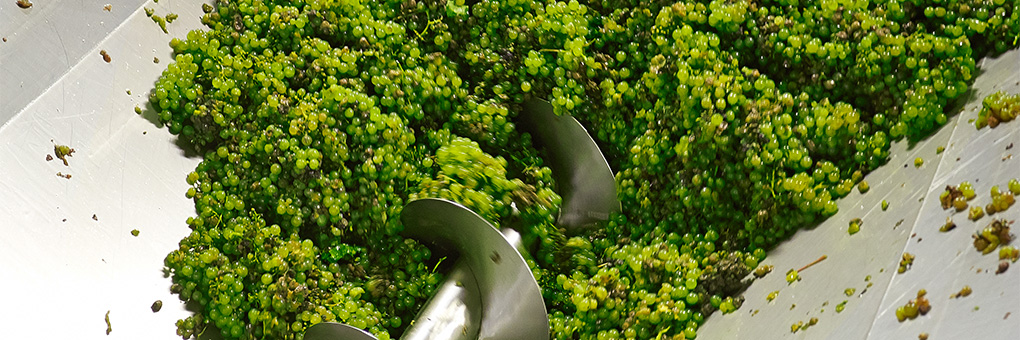
Climate change and viticulture: A stress test for the 2017 vintage
Climate change is becoming much more noticeable, with extreme weather occurring more frequently from one year to another and posing a growing challenge for winegrowing.
Warm temperatures in March, late frost in April, drought in July, heavy rainfall in August and finally in the fall of 2017 the earliest harvest in history.
The wines have a high degree of minerality and are of extremely promising quality, even if the harvest size is once again smaller than in previous years
Trier, 14th December 2017 – After an unusually mild March, a cold spell in late April and early May came as a surprise. The sudden late frost caused considerable damage to the vines: nearly half of the young shoots froze in some of the best and most renowned vineyards of the Bischöfliche Weingüter Trier. “Already at the beginning of the season, we had to assume there would be serious harvest shortfalls, which was not a nice way to start the year,” Dr. Karsten Weyand emphasizes , Estate Director of Bischöfliche Weingüter Trier. The cold spell was followed by a dry phase that lasted for several weeks. Rain finally came in July, but it was accompanied by many undesirable side effects such as hail, heavy showers, storms and bad weather. August was characterized by warm, wet weather, resulting in a remarkably early start of the harvest in mid-September.
The green light was given on 15 September, starting with Pinot Noir Précoce, whose yield was small but adequate. The Pinot Noir and Saint Laurent grapes were harvested from September 16th to 21st. “By selectively harvesting by hand, we were able to pick very high-quality grapes. But after thorough examination, we agreed that the level of ripeness and the color of the red wine grapes did not meet our standards for maturing into first-class red wines,” Johannes Becker explains, enologist and cellar master. Instead, we decided to keep the musts of these varieties for rosé, which can reach top quality without requiring such full-bodied grapes. A third phase of harvesting from September 21st to 30th allowed us to bring in the Pinot Blanc grapes, which were very good both in quality and yield.
Climate change strategy
After a turbulent year marked by weather extremes - from frost to drought to sweltering humidity and torrential rains - the worst was expected for the harvest of the climate-sensitive Riesling starting from the final 10 days of September. But a lot of rain can also be beneficial, Stephan Bigus explains, Vineyard Manager of the Bischöfliche Weingüter Trier: “Terroir and minerality will be expressed very clearly in the 2017 vintage, as this climate allows the vines to draw minerals particularly well through their roots.”
The sub-regions of the Mosel region were affected by the unpredictable weather of 2017 to varying degrees: in the Middle Mosel and the Saar valley, yields were only slightly below average and the quality of the must was very good. Along the Ruwer, harvest losses were significantly higher. “We know that we will have to be more prepared for extreme weather in the future. For several years now, we have been developing strategies to sustainably adapt our methods for cultivating and producing Riesling and Pinot to climate change" Dr. Karsten Weyand says.
High quality despite low yield
As expected, the Riesling harvest yielded smaller quantities than in previous years, but as the harvest progressed, the quality of the grapes increased thanks to the continued good weather. “From dry estate Riesling to the distinctive village and single-vineyard wines made from grapes grown in our best sites along the Mosel, the Saar and the Ruwer rivers, right through to outstanding sweet Beerenauslese and Trockenbeerenauslese wines, the 2017 vintage really has everything to please." Alexander Jelen, Director of Sales and Marketing claims.
After more than six weeks of fermentation, the developing wines were fruity and clear with lots of finesse and elegance. The high extract values of the 2017 vintage gave much structure and length. Most of the wines will undergo spontaneous fermentation, which usually continues into the new year. The 2017 vintage has a great potential and will keep for a long time. The last vintage with such a high proportion of Spätlese and Auslese wines was 2011. The Beerenauslese wines of this year are made from grapes from the Ayler Kupp, Kaseler Nies’chen and Scharzhofberg sites. The Trockenbeerenauslese wines are made from grapes from the Ayler Kupp, Dhroner Hofberger and Scharzhofberg sites.
